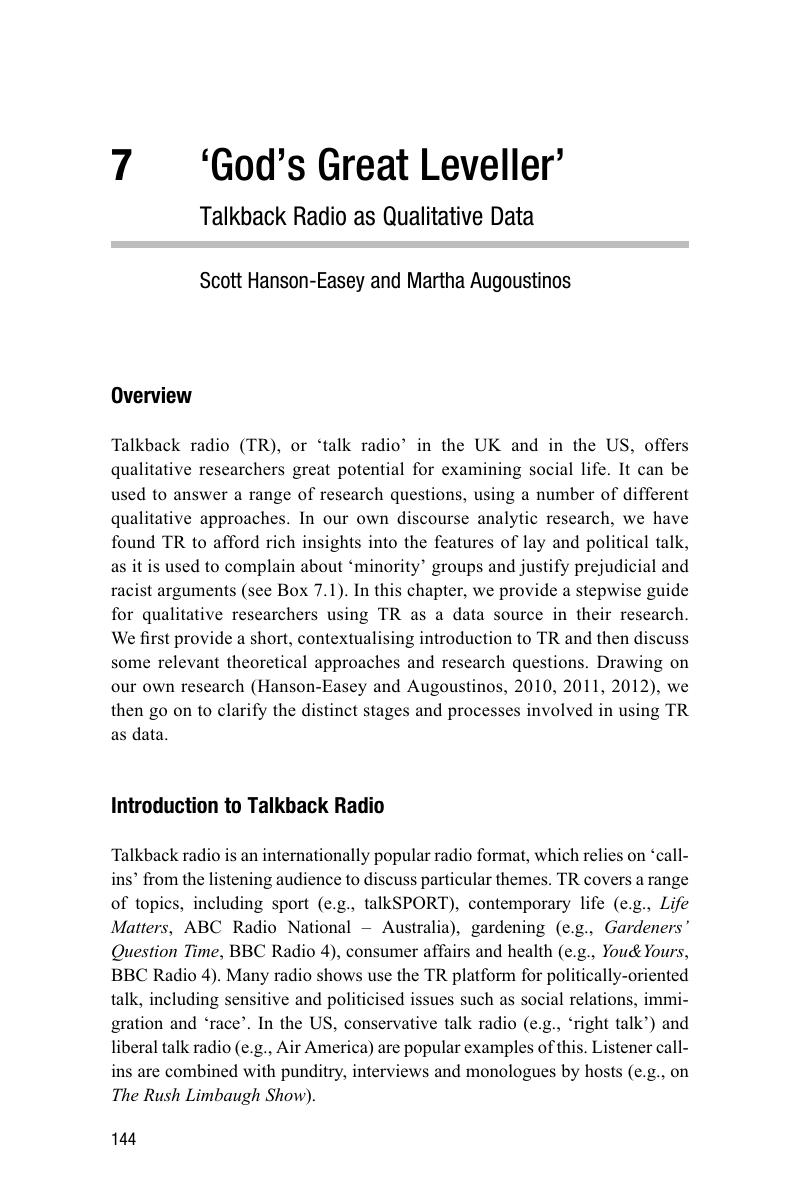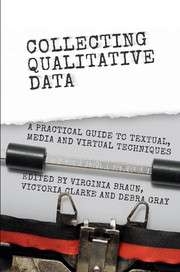Book contents
- Collecting Qualitative Data
- Collecting Qualitative Data
- Copyright page
- Contents
- Figures, Tables and Boxes
- Acknowledgements
- Contributors
- Foreword
- 1 Collecting Textual, Media and Virtual Data in Qualitative Research
- Part I Textual Data Collection
- Part II Media Data Collection
- 6 Making Media Data
- 7 ‘God’s Great Leveller’
- 8 Archives of Everyday Life
- 9 Online Discussion Forums
- Part III Virtual Data Collection
- Afterword
- Glossary
- Index
- References
7 - ‘God’s Great Leveller’
Talkback Radio as Qualitative Data
from Part II - Media Data Collection
Published online by Cambridge University Press: 06 October 2017
- Collecting Qualitative Data
- Collecting Qualitative Data
- Copyright page
- Contents
- Figures, Tables and Boxes
- Acknowledgements
- Contributors
- Foreword
- 1 Collecting Textual, Media and Virtual Data in Qualitative Research
- Part I Textual Data Collection
- Part II Media Data Collection
- 6 Making Media Data
- 7 ‘God’s Great Leveller’
- 8 Archives of Everyday Life
- 9 Online Discussion Forums
- Part III Virtual Data Collection
- Afterword
- Glossary
- Index
- References
Summary

- Type
- Chapter
- Information
- Collecting Qualitative DataA Practical Guide to Textual, Media and Virtual Techniques, pp. 119 - 143Publisher: Cambridge University PressPrint publication year: 2017
References
Further Resources: Online
TuneIn is an Internet radio website that allows you to search for podcasts of particular TR shows. It provides a good way to find data or to get a feel for what TR feels and sounds like: http://tunein.com



